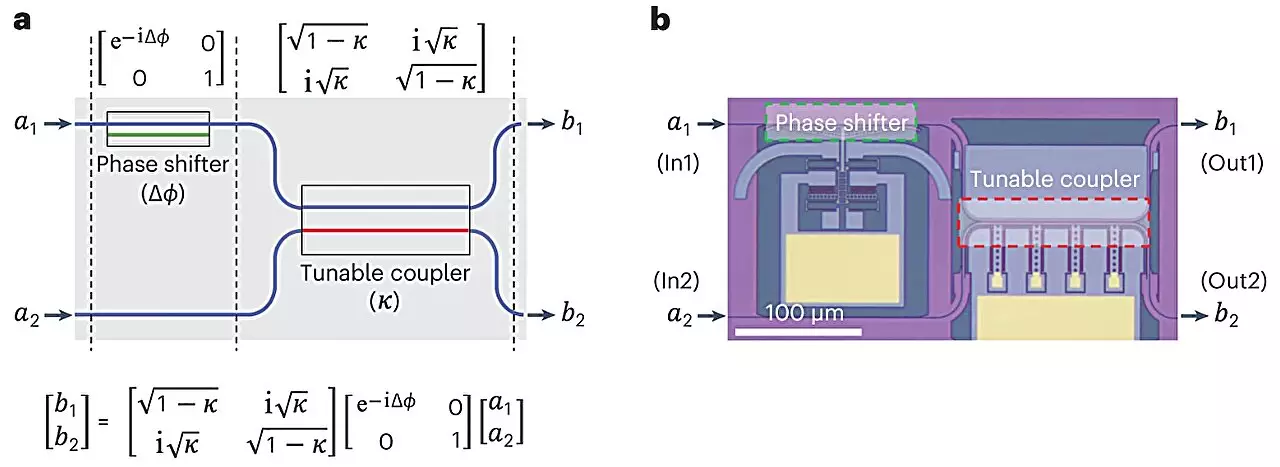Programmable photonic integrated circuits (PPICs) have the potential to revolutionize computation, sensing, and signaling by leveraging light waves for a wide range of applications. Researchers at the Daegu Gyeongbuk Institute of Science and Technology (DGIST) in South Korea, in collaboration with the Korea Advanced Institute of Science and Technology (KAIST), have made a significant breakthrough in incorporating microelectromechanical systems (MEMS) into PPICs. Published in the journal Nature Photonics, their research opens up new avenues for faster, more efficient, and highly parallel computing capabilities.
Sangyoon Han, part of the DGIST team, emphasizes that PPICs hold the promise to outperform conventional supercomputers due to their increased speeds and reduced power consumption. By utilizing light instead of electric current, PPICs can offer major advancements in artificial intelligence, neural networks, quantum computing, and communications. The integration of silicon-based photonic MEMS technologies onto PPIC chips sets the foundation for groundbreaking advancements in the field.
Efficiency in Power Consumption
The researchers have successfully achieved a significant reduction in power consumption by developing MEMS components that operate at femtowatt levels, surpassing the previous state-of-the-art by over a million times. Furthermore, the integration of these components onto PPIC chips opens the possibility of constructing chips that are up to five times smaller than existing options. This reduction in size is a crucial step towards the miniaturization of computing systems and the creation of more compact devices.
Transitioning from Thermo-Optic to Electrostatic Forces
Unlike current PPIC systems that rely on temperature changes, the new breakthrough by the DGIST team relies on the power of electrostatic forces to drive tiny mechanical movements within the PPIC chips. By manipulating the “phase” of light waves and controlling the coupling between parallel waveguides, the researchers successfully meet the two fundamental requirements for building PPICs. These advancements, combined with the integration of micromechanical “actuators,” have paved the way for the development of highly programmable integrated circuits.
The innovative fabrication process utilized by the research team offers compatibility with conventional silicon wafer technology. This means that the manufacturing process can be easily scaled up for large-scale production of photonic chips. This compatibility is instrumental in ensuring the commercial viability and widespread adoption of PPICs for various practical applications.
With their groundbreaking research, the DGIST team is now working on refining their technology to build and commercialize photonic computers that surpass the capabilities of traditional electronic computers. Specific applications include inference tasks in artificial intelligence, advanced image processing, and high-bandwidth data transmission. By pushing the boundaries of computational technology, the team aims to advance the field of photonics and enable its practical implementation in modern technology.
The integration of microelectromechanical systems into programmable photonic integrated circuits marks a significant advancement in the field of computing. By harnessing the power of light waves and reducing power consumption, researchers at DGIST and KAIST are paving the way for faster, more efficient, and highly parallel computing capabilities. With further developments and refinements, the potential applications of PPICs in artificial intelligence, image processing, and data transmission are boundless. The future of computing technology looks bright, driven by the innovative research and breakthroughs in programmable photonic integrated circuits.


Leave a Reply